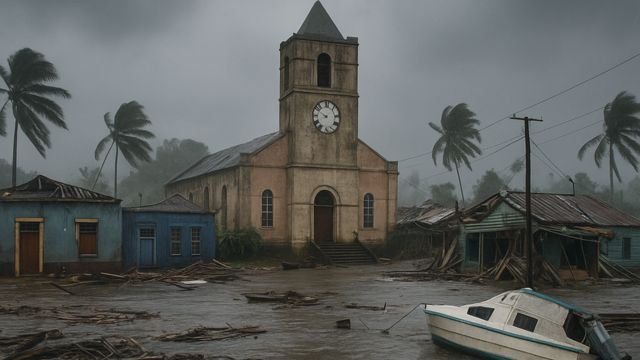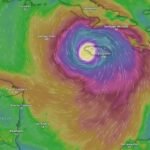When people talk about Black River, Jamaica, they usually picture calm boat rides, sleepy mangrove swamps, and crocodiles basking on the banks of a slow-moving current. It’s a place known for nature, history, and quiet power. But when Hurricane Melissa made landfall this week with 185 mile per hour winds, Black River suddenly found itself at the center of a life-threatening emergency. The town’s beauty turned into vulnerability, and its location became both a blessing and a curse.
Black River is not just a dot on the map. It is the capital of St. Elizabeth Parish, a coastal town where the island’s widest river meets the Caribbean Sea. It’s a gateway to the Lower Morass, a flat wetland area where floodwaters can spread quickly. The people here are used to heavy rains and swollen riverbanks, but Hurricane Melissa brought something entirely different. It brought record-breaking winds, a wall of seawater, and the kind of storm surge that can change a landscape in a few hours.
From the moment Melissa’s eye crossed the coast, the signs were clear. This was no ordinary storm. It was the strongest hurricane ever recorded to hit Jamaica, and Black River sat right in its impact zone. Power was knocked out early, streets turned into rivers, and families scrambled to higher ground. The surge didn’t just come from the sea, it came from the river too. With heavy rain inland and blocked drainage at the mouth, water had nowhere to go. It backed up fast, pushing into homes, shops, and even parts of the hospital district.
Local shelters filled quickly. Residents of Luana, Parottee, and the surrounding flood-prone areas found themselves relying on ODPEM advisories, radio updates, and community volunteers. By mid-afternoon, responders were warning people to stay clear of standing water, not just because of debris or live wires, but also because of crocodiles. That’s not a movie plot. It’s a real part of Black River’s risk profile. When rivers flood and mangroves overflow, crocs go wandering. The Jamaica Environment Trust and NEPA often send reminders after big storms, and this time was no different. People were asked to avoid flood zones, keep pets secured, and report sightings, not take selfies.
The town’s river safari boats, so often a symbol of eco-tourism, sat idle or damaged. Docks were pushed sideways, and mangroves that had stood tall for decades were tangled with trash and fallen trees. But even through the chaos, one thing was clear. Black River knows how to adapt. It’s done it before. This is the town that first got electricity in Jamaica. It’s been a port, a market hub, and a tourist stop. Now it’s proving it can also be resilient in the face of disaster.
As the skies cleared and the wind dropped, the hard work began. People came out with rakes, buckets, and phones, documenting damage and checking on neighbors. Emergency crews prioritized clearing roads to the hospital and ensuring communication lines were restored. At the same time, authorities urged caution. Water might recede, but risks remain. Crocodiles may still be on the move. Fuel slicks from damaged boats could linger. And the water supply might take days to stabilize.
The storm made headlines around the world. CNN, ABC, and weather services confirmed what local families already knew: this was no average hurricane. Melissa slammed Jamaica with fury, and Black River stood right in the crosshairs. Yet even with so much destruction, the community spirit did not break. In fact, it got stronger. From the parish capital to the edge of the Morass, people are already rebuilding, drying out, and finding ways to return to normal.
For those looking at maps or reading news from far away, Black River might just seem like one more name in a storm path. But on the ground, it’s a place where history, ecology, and resilience come together. It’s where crocodiles live beside fishermen. Where tourists drift through mangroves one day and shelters open the next. It’s a town that lives with the river, and sometimes fights it.
This storm has reminded everyone that Black River is more than a quiet town. It is a frontline community, both vulnerable and strong. The recovery will take time, but the people here have roots as deep as the mangroves that line their waters. They will clean, rebuild, and keep telling their story.
As the Caribbean enters deeper into storm season, Black River will remain a symbol of both risk and hope. A place where nature’s power is always present, but where community strength runs just as deep.


